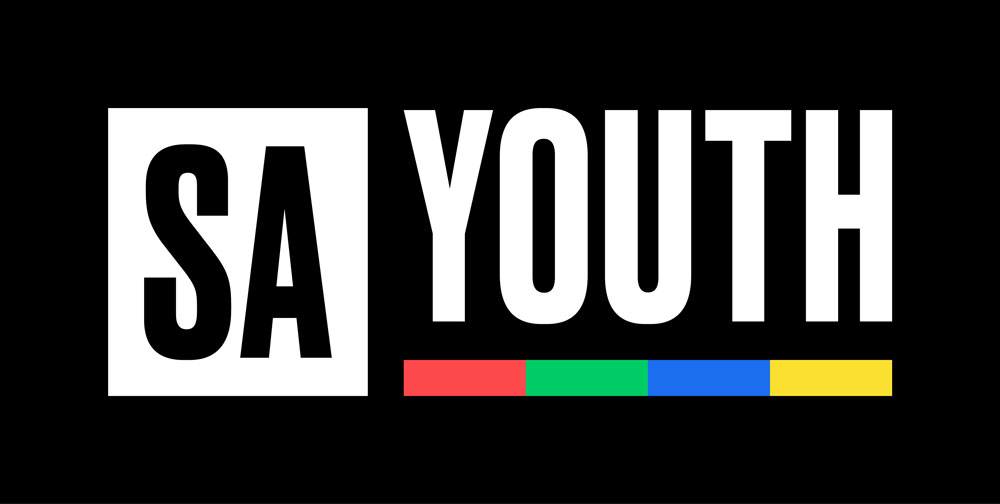BREAKING
BARRIERS
Quarterly Report
November 2024
<iframe src=“https://www.harambee.co.za/wp-content/uploads/2024/11/Securing-Non-Profit-Funding-Spring-Impact-report-3-compressed-2.pdf” width=“100%” height=“600px”></iframe>
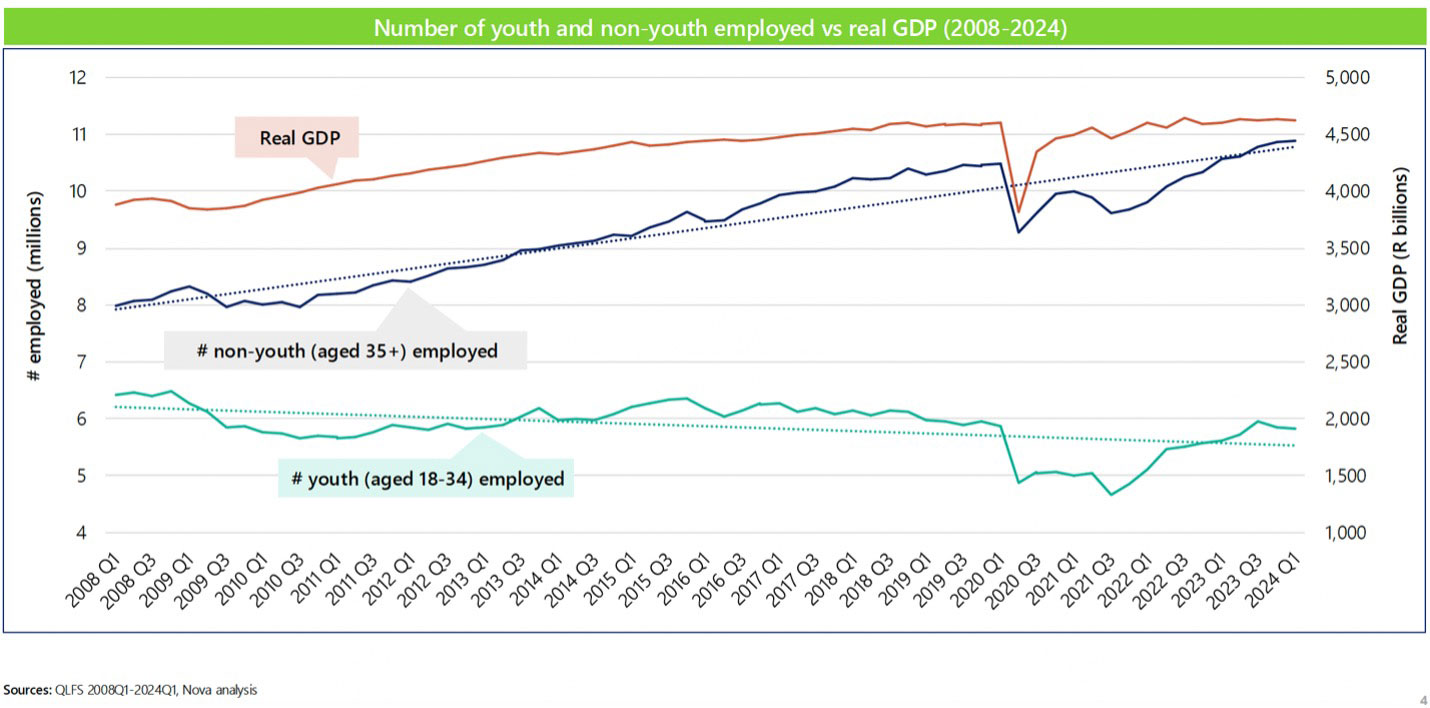
We can speculate about why this is the case – lack of skills, hiring biases, and structural barriers – but this data suggests that we have a generation of young people whose potential and productivity is being squandered. This is despite the scaling of many interventions in South Africa, including 1.4 million work opportunities that were enabled by SA Youth, of which 8% are net new jobs that have gone to youth, or programmes like Youth Employment Services (YES) which have placed nearly 160,000 youth in quality 12-month work experience programmes. These programmes are stemming the tide, not reversing it.
Growth is a necessity but is an insufficient condition for youth employment. And even if we were to achieve the ambitious targets laid out each year by individual organisations, an even more ambitious collective vision is still needed.
How can we reverse this crisis, and by when?
From Harambee’s 13 years of experience, we have assembled data and evidence for what ‘levers’, if applied at scale, could reverse this crisis: inclusive hiring of youth, unlocking youth jobs in new sectors, growing youth self-employment, and prioritising youth in work experience programmes.
We can can take concrete steps to shift this crisis. For example – employers can drop unnecessary barriers to entry level roles and engaging with alternative assessments such as those available on SA Youth, combined with strong mentorship and work readiness programmes. SMMEs operating in the township economy can work to derisk entry for youth, and corporates can create more supportive value chains for youth-led enterprises, to help South African create a culture of job creators rather than job seekers. Finally, we need to sustain work experience programmes to drive inclusion and pathways to longer term work—but optimise them by creating a strong evidence base for their effectiveness.
The effect of all levers being pulled together could see the relationship between GDP and youth employment strengthening, with a total increase of three million additional young people in employment, and the youth unemployment rate declining from a projected 56% to 34% by 2030.
Critically we need pathway management across all these levers – to break barriers and support youth to access work and stay in work. This requires a bold vision for us to fire on all cylinders and add jet fuel to the great work being done by individual organisations. At the heart of this vision is the assumption that inclusion does not need to be at odds with growth but, if we act intentionally, it can unlock prosperity for all.
KEY INSIGHTS FOR
THIS QUARTER
Lever 1 – Drive the inclusive hiring of youth for jobs currently available, while also accelerating the creation of new youth jobs
Insight: There is space for youth in the economy, there are jobs they can do, and by targeting growth sectors and incentivising youth hiring, both the sectors and youth will benefit.
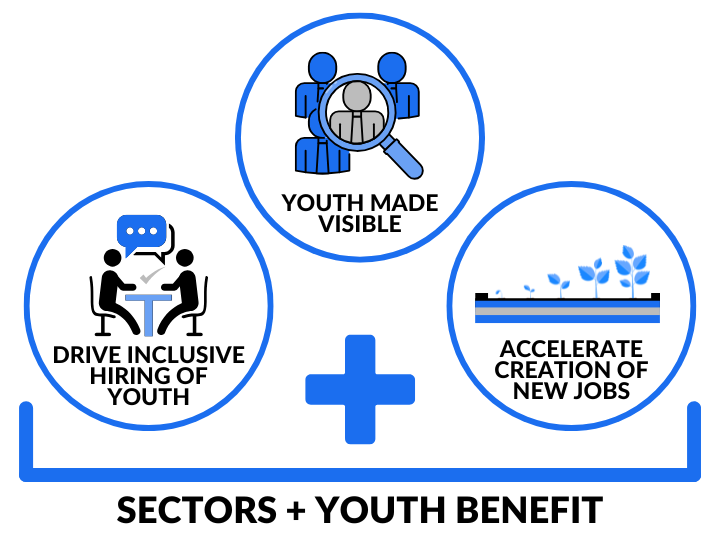
Source: Harambee Youth Employment Accelerator 2024
We have seen this with partners such as First National Bank (FNB), Hollard, Nando’s and Telesure. Our model of inclusive matching has enabled, through the SA Youth Platform, the placement of youth into 1.5 million earning opportunities, of which 66,181 opportunities are across 20 private sector companies in high-youth absorbing sectors such as finance & business services, wholesale & retail, and community & personal services.
The intentional hiring of youth for roles in these sectors directly strengthens the relationship between GDP growth and youth employment. The top four youth-absorbing sectors (finance & business services, wholesale & retail, community & personal services, and construction) already employ 4.1 million youth but trends since 2008 show that youth employment has not followed sector growth. However, in the finance and business services and wholesale and retail sectors, youth jobs have collectively declined by 175,000 compared to a total job growth of 1.4 million amongst non-youth jobs. The good news is that youth have done these jobs in the past and can do them again! If all jobs added from now until 2030 in these sectors were to go to youth (while taking no jobs away from non-youth) the impact on youth unemployment would be larger than if the economy were to grow at more than 4%, and is doable because of the high proportion of youth-friendly roles such as elementary workers, clerks and service workers. In the finance and business services sectors, 64% of employees work in these occupations; with the number being 87% in the wholesale and retail sector.
South Africa’s ‘sunrise’ sectors, such as digital, Global Business Services (GBS), and green/renewables, also offer huge potential for youth employment. Targeting these high-growth sectors and adding between 50,000 and 75,000 youth jobs annually could create an additional 375,000 youth jobs over six years, reducing the youth unemployment rate by 3% and contributing to long-term economic growth. With these numbers, there is no question that growth can address youth employment, but only if we target growing sectors and structure incentives to promote the inclusion of youth. This has already been done in the GBS sector with the establishment of a sector master plan and a newly renewed GBS incentive for inclusive hiring. By using these instruments and nurturing strong sector coordination between the Department of Trade, Industry and Competition (DTIC), industry body Business Process Enabling South Africa (BPESA), and Harambee; over 148,590 new jobs have been created within the sector since 2010, contributing $2.367 billion in export revenue. Of these jobs, 89% have gone to youth and 16% have specifically gone to inclusive hires.
Such approaches can be replicated in other sectors like digital and the green economy. The growing importance of the digital sector has led to the establishment of The Collective X to address the digital skills gap and unlock 25,000 new jobs for youth. Funding instruments such as the TCX Outcomes Fund and the Jobs Boost Fund, a R300 million pay-for-performance model that is being piloted in South Africa, are key enablers to driving this job growth. Within the green economy, the job creation potential is between 85,000 and 275,000 new jobs, with the majority (50,000-141,000) in the solar sector. The SA Youth platform has recorded a 248% increase in green job placements since 2022, with continued growth expected.
For young people and employers to harness the opportunities within these growing sunrise sectors, active collaboration with government and key business groups is needed to drive smart sector strategies, supported by incentives and support packages. And while creating new jobs may be the hardest lever to pull, it has the most outsized impact with an impact on indirect jobs, as well as attracting investment, and driving innovation and economic competitiveness. It also offers roles to young people that are sustainable, future-proof, and aligned to global trends.
Prioritising the inclusive hiring of youth is achievable, particularly for entry-level roles that do not require higher education levels or previous work experience. Engaging with alternative assessments such as those available on SA Youth that measure behaviour traits (such as grit, agency, and problem-solving aptitudes) enable hiring decisions based on potential—early data suggests that 20% more youth are made visible to jobs of today, as a result of these inclusive assessments. Coupled with strong mentorship and work readiness programmes, this can help young people access and thrive in jobs they may otherwise not have been able to secure.
Lever 2: Grow the informal economy for it to absorb youth and generate earnings
Insight: Informal work needs to be derisked for youth – otherwise incomes are precarious. Intentionally opening supply chains to micro enterprises benefits both existing and new business
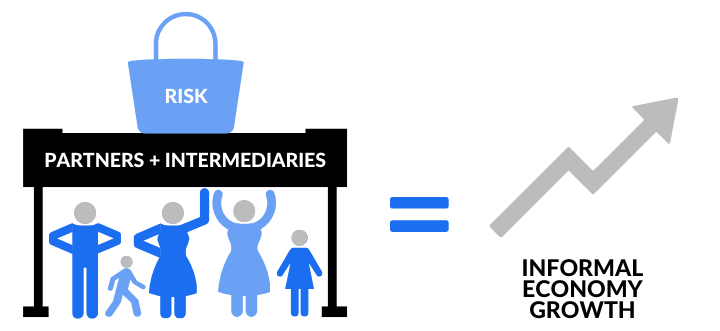
Source: Harambee Youth Employment Accelerator 2024
Sunrise sector jobs are “the holy grail” and everyone wants jobs of the future, but they are incredibly hard to unlock. Expanding the informal sector’s share of youth employment from 20% to 30% – a systemic and structural shift in the shape of our economy, could result in 900,000 additional youth jobs by 2030 reducing the youth unemployment rate by 6%. It would also unlock an engine of growth in value chains like last-mile sales and delivery, mobility, and agriculture.
But we need to de-risk the entry of youth into the informal economy, otherwise, they are doomed to precarious incomes. Most business ideas pursued by youth are temporary and uncertain, leading to inconsistent incomes and financial instability. Operating outside legal frameworks can also leave youth vulnerable to exploitation and many self-employed individuals find the costs of formalisation prohibitive. Poor access to funding and skills training further restricts the type of work young people can take on, trapping them in low-paying and unstable activities. On top of all of this, a lack of formal financial services hinders their ability to save or invest, perpetuating poverty. As a result, self-employment opportunities tend to be the last resort for young people and the least ‘sticky.’ SA Youth data reflects that only 23% of people starting in a self-employment role within our network transition to another self-employment opportunity, the rest opting out into more secure work experience programmes (36%) or formal economy (41%) roles. We cannot expect youth to ‘entrepreneur’ their way out of poverty with side hustles, but if we support them, this could lead to economic resilience and community upliftment.
We have done this before, with partners such as Qwili and Green Riders, which enable less precarious incomes. Opportunities unlocked through SMME partners offer access to markets, financing, skilling, and assets; generate higher incomes ranging between R3,000 and R5,000 and keep excluded youth engaged for significantly longer, estimated at an average of 12 months. This translates into an additional R33,200 – R56,400 in earnings per opportunity over a year.
The last-mile delivery sector is emerging as an exciting zone of opportunity for excluded youth to make their own money, and organisations like YourBikeClub and Green Riders help young people to cut down the operating costs of running their own delivery business. South Africa’s e-commerce market is expected to reach more than R400 billion by 2025 with more than 1 billion transactions per annum, and this growth is also labour absorptive with an increase in the new jobs for delivery drivers. Through support such as access to markets, monthly gross earnings for drivers are estimated to reach between R3,300 per week to R14,000 per month. And while drivers typically face high running costs of up to R1,500 per month, SMME partnership support can help mitigate this, enabling potential net incomes of R1,800 per week or R7,200 per month.
Agriculture is another sector that offers significant self-employment potential, provided there is extra support to de-risk youth entry. Harambee’s recently completed ROOTS Agripreneur pilot project sought to address this by providing 130 young people with comprehensive agri-growing and business management skills, start-up capital, and access to markets. Through this, participants became sustainable ‘agripreneurs’, earning almost R12,000 per participant, with some reaching R162,000 in their first production cycle from June 2024 since pitching and setting up their businesses. For their next production cycle, it is expected that their average income will increase by 20-40%. The results not only show the impact of agripreneurs on local economies and food security when equipped with proper support but also showcases the chance to create more jobs. Early indicators highlight that agripreneurs can employ an average of 1-3 additional people, all in underserved rural and peri-urban communities. Another example is Unilever’s Jozini Agricultural Project that has reached almost a thousand people, 76% youth and 66% women. This project brings small-scale farmers into Unilever’s supply chain and gives participants exposure to its end-to-end business process.
We need to expand our informal economy, derisk entry for youth, and accelerate absorption of youth into SMMEs. Self-employment and entrepreneurship are key levers for reducing youth unemployment and by fostering a more supportive ecosystem for youth-led enterprises, South Africa can create a culture of job creators rather than job seekers.
Lever 3: Sustain work experience programmes to create an economy that moves and keeps youth engaged
Insight: Well-run work experiences, both public employment programmes and those run by the private sector, can be an inclusive stepping stone to work for our most excluded
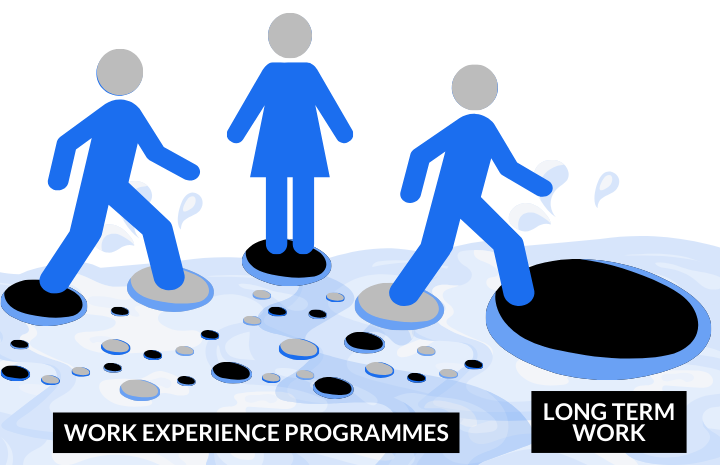
Source: Harambee Youth Employment Accelerator 2024
In the absence of a growing economy, we need to create an economy that moves. We have to forge on with work experience programmes like the Department of Basic Education’s (DBE) School Assistants programme and YES programmes which offer opportunities for the most excluded, and present stepping stones to long term work. This is critical because of what the QLFS data tells us about a subset of our youth who may never work: out of our 9 million NEETs, almost 6 million have never worked. This is proportional to about 40% of youth who have left the education system, and most of these are under the age of 30. In an economy that does not offer nearly enough full-time jobs, the availability of part-time or occasional opportunities that can provide young people with the chance to work at least once are enormously valuable.
This value has reached far and wide as reflected by the 477,857 public employment opportunities recorded on SA Youth. The DBE School Assistants programme has collectively provided over 1.2 million young people with work experience across South Africa, and the privately funded YES programmes have created over 158,000 quality 12-month work experiences.
What shines brightest about these programmes, however, is their inclusivity: 74% of YES participants come from households receiving social grants, which has been shown to drop off substantially as individuals transition into long-term employment. The programmes also reach rural and peri-urban locations characterised as job deserts since youth are less likely to transition to formal sector jobs. These geographic areas not only have fewer work opportunities but the earning opportunities available also look different: they pay less and are more likely to be in the informal sector, agricultural sector, and private households. Work experience programmes are the exception by offering moderate earnings, between R1,472 (for 16 hours per week) or R4,000 (for full time), with minimal fluctuations. Using government data and data from the SA Youth Platform, the impact and reach of public employment programmes such as National Youth Service (NYS) and Expanded Public Works (EPWP) can be seen below.

Source: Harambee Youth Employment Accelerator 2024
More and more youth are participating in work experience programmes, and they often use these as a way to secure their spot in other work experience programmes. So, while these programmes are a critical systems lever to enabling access to the labour market and offering work experience, we need to do more to support youth so they can rather move into other full-time roles.
Embedding such programmes into the labour market enables earning access for hard-to-reach youth and by optimising these programmes that offer short-term work opportunities, an additional 200,000 youth that might have never worked are given a chance at short-term work each year. This reduces the number of individuals that have never worked by 1 million by 2030 and in the long run, this number could even be reduced to zero. Over and above potentially reducing the youth unemployment rate by 3%; these programmes create hope.
Conclusion
Tackling youth unemployment demands that all levers – the adoption of inclusive hiring, sustained work experience programmes, and meaningful support for youth entrepreneurs – be executed in the best way possible. There is no single lever that on its own can significantly reduce South Africa’s unemployment challenge but by firing on all cylinders, each lever complements the other and together they can form a powerful engine for sustainable change.
Quarterly Labour Force Survey Release – 12 November 2024
The latest QLFS results showed the first significant employment increase to happen in the last year, and there are now more South Africans employed than ever before. The employed population increased by 1.76%, or by 294,000 people, between Q2 and Q3 of 2024, to just under 17 million. But this uptick does not, unfortunately, extend to youth – in fact, there are still fewer youth employed now than 15 years ago. The expanded youth unemployment rate (which includes discouraged work seekers) is now at 55.2% and has remained, stubbornly, in a similar range in the past two years. It seems this may be the new post-Covid level, one that hovers around 55% rather than the approximately 50% pre-COVID levels.
This surely justifies an ever more strident call for all the levers to be pulled to reverse this youth unemployment crisis.
The uptick in general employment also needs to be seen in the context of an expanding labour market which means that while there are more employed people, there are also more unemployed people. And not just unemployed, but the number of people who are also not in education or training (NEETs) has increased year-on-year. The total number of NEETs now stands at 8.85 million, up from 8.57 million in the same quarter of last year.
A broader picture of what is happening in employment by province, sector, occupation, and skills level should be part of the coordinated attack on the unemployment crisis and the survey results offer us a glimpse into these. Labour-intensive sectors, such as construction, utilities and mining produced more jobs this quarter than in the previous quarter, while the financial services and transport sectors shed jobs in the last quarter. More jobs were created in medium-skilled occupations, such as service and sales, clerks and plant and machine operators. Highly skilled occupations, such as professionals and technicians, saw a decline in the number of workers quarter-on-quarter. By province, the number of employed people in Gauteng declined, and the employed population remained the same in KwaZulu-Natal. In all other provinces, however, the number of employed people increased.
Expanded Youth Unemployment Rate

Youth Employment by Gender

NEED MORE INFORMATION?
WANT AN OFFLINE VERSION?






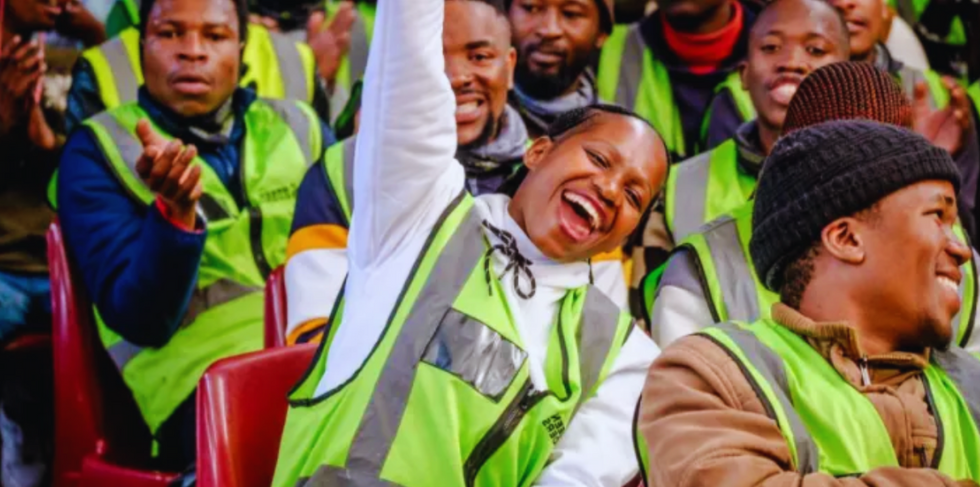


 Stay Connected
Stay Connected
